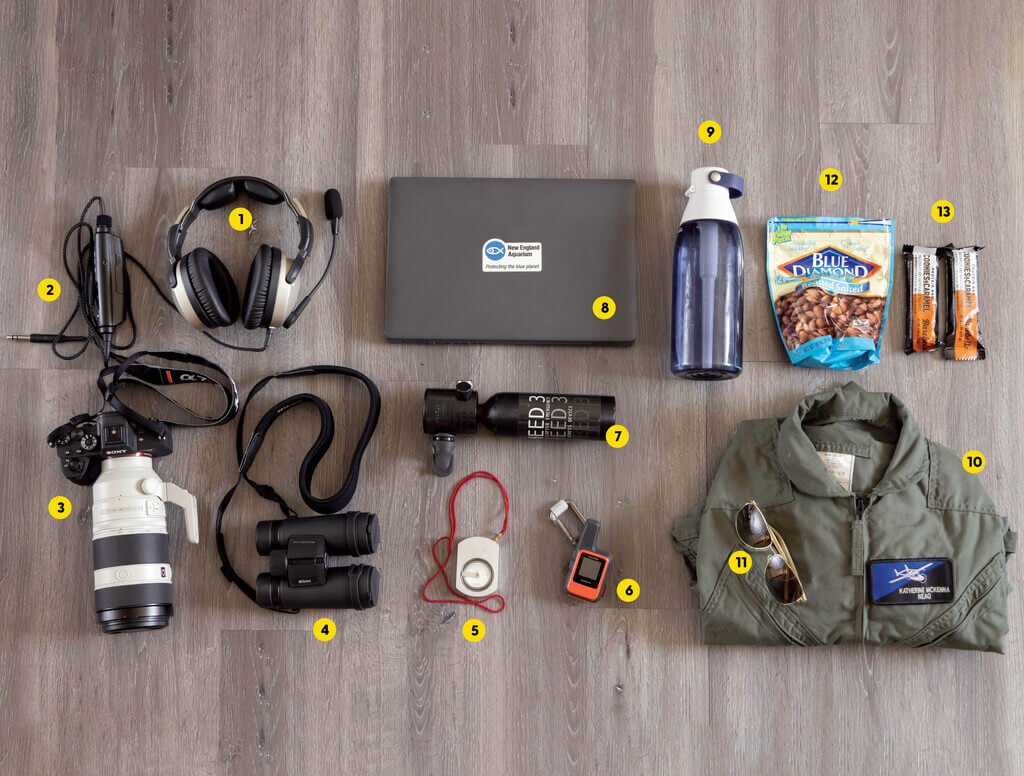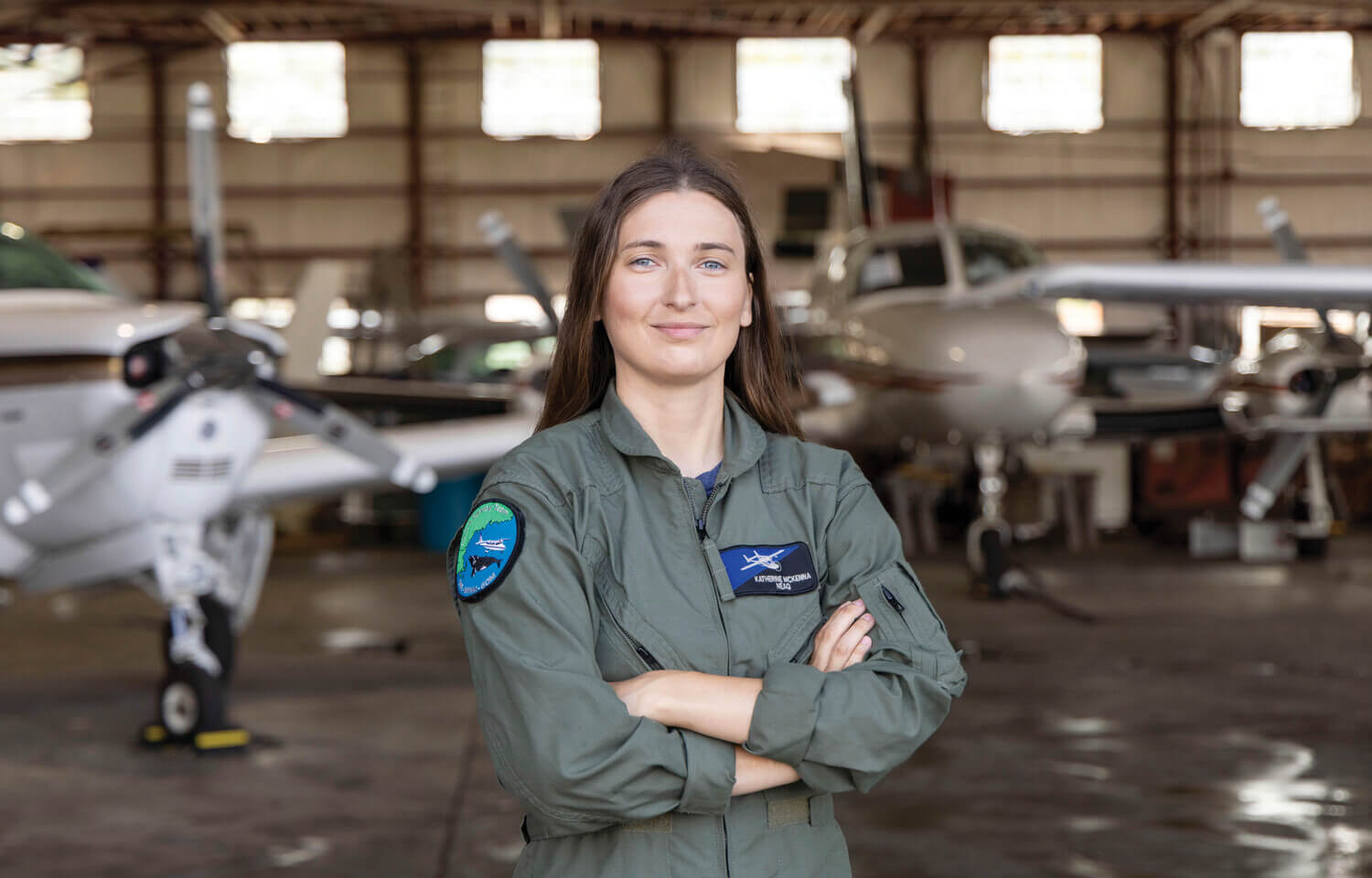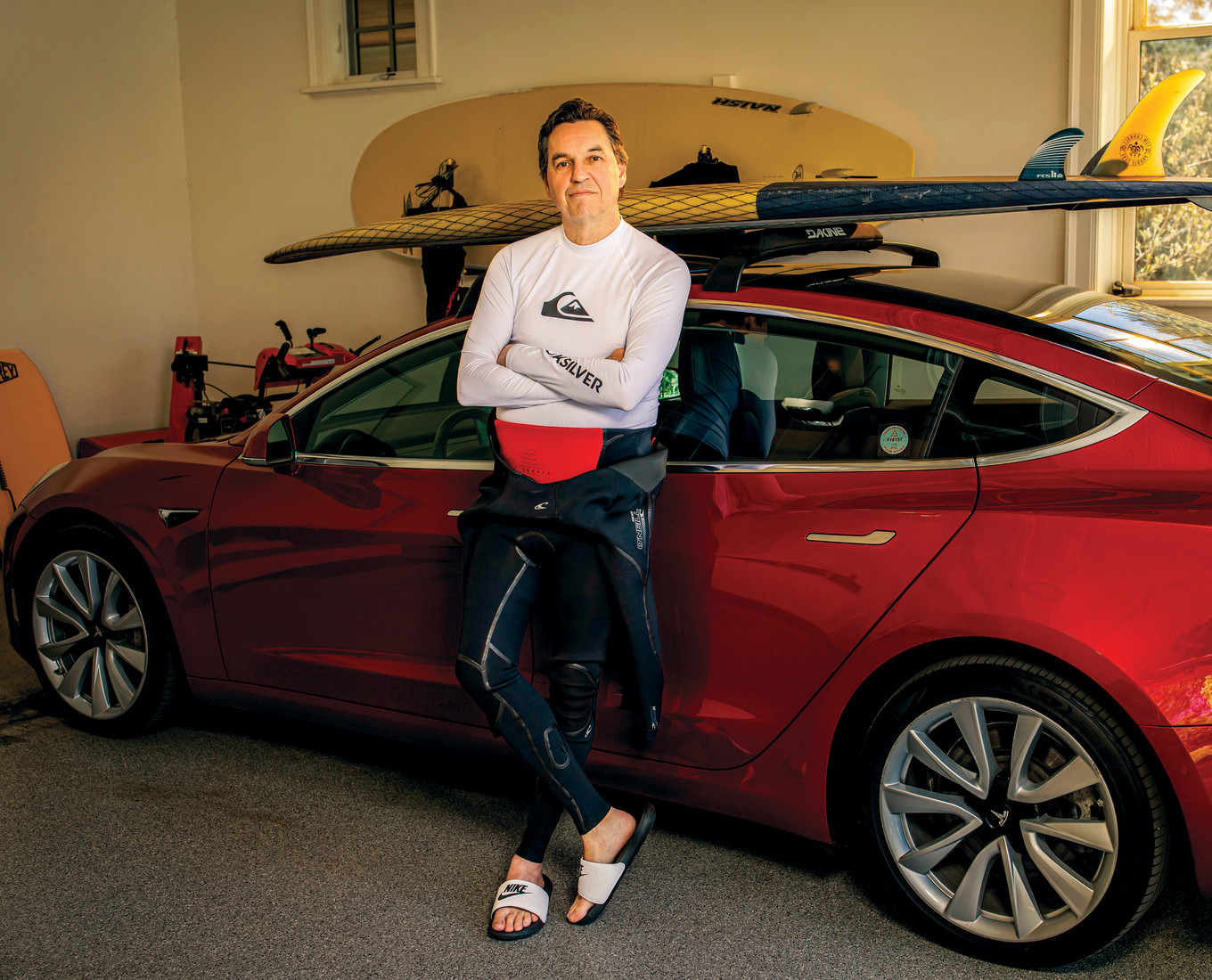Katherine McKenna ’15, associate scientist at the New England Aquarium’s Anderson Cabot Center For Ocean Life, spends an average of seven hours a day, two days per week, peering out the window of a small twin-engine plane as part of an aerial team surveying whales and other sea life — gathering crucial data to better understand how human activity and climate change are impacting the planet.
A Dallas native, McKenna summered on Cape Cod, where she fell in love with the ocean. She majored in biology at Holy Cross and worked as a naturalist on whale watching boats and as a marine animal rescuer, before ultimately finding her dream job with the New England Aquarium, where she and her team are one of the few East Coast marine survey teams that fly year-round.
Here's what's in her bag:

1./2. Lightspeed Zulu aviation headset with noise-cancelling control. I use this to communicate with the other observer and two pilots. It features Bluetooth, which is handy for listening to podcasts or music during long flights.
3. Sony a7RIV mirrorless camera with 100-400 mm lens. This camera allows us to take photographs 1,000-1,500 feet above the water. The long telephoto lens helps us get zoomed-in, high-quality shots, and a grip steadies the camera if the plane is bumpy. From the air, we primarily see humpback whales, fin whales, minke whales, North Atlantic right whales and occasionally blue whales, sperm whales and Sei whales, as well as various species of rays, dolphins and turtles, in addition to basking sharks, blue sharks and whale sharks. We occasionally spot white sharks, especially if there’s a carcass they’re eating.
4. Nikon Monarch M7 binoculars. We are always scanning out a few miles. When we see a suspicious-looking white cap, a spout or splashing, we look through binoculars to decide if we want to get closer. If we need photographs, the pilot will circle around the animals to keep them in the camera’s view.
5. Suunto inclinometer. This device allows us to calculate an animal’s accurate distance from the plane.
6. Garmin mini inReach. Because we fly so far offshore — up to 150 miles east of the coast — we’re oftentimes out of cell service. The Garmin allows us to send messages to the ground team. If we have an entangled whale or a dead animal, or if we’re running into issues with weather or need to send an emergency signal, we can.
7. Submersible Systems HEED 3 bottle. In case of an emergency landing in the water, this air bottle would serve as a miniature scuba tank, giving us more time to escape the aircraft.
8. Dell Inspiron laptop. Our survey data program tracks our flight path and the day’s sightings. In the spring, we spotted a large aggregation of right whales south of Martha’s Vineyard and Nantucket in shipping lanes heavily trafficked with large commercial ships. While there, we had an exciting sighting of Calvin, a 33-year-old right whale who became well known in the field after her mom was struck and killed by a boat in 1992. Calvin was only 8 months old. It had been two years since Calvin was last seen, with severe entanglement wounds. Many researchers thought she had died, so this was an exciting sighting. Right whales, which are critically endangered, have unique patterns on the tops of their heads — called callosities — that we can see from the plane, almost like a fingerprint.
9. Brita water bottle. You’re so busy looking out the window that it’s easy to lose track of time and get dehydrated. In the summer, it can get really hot in the plane, so hydrating is important.
10. Nomex flight suit. This is our summertime suit. We have another orange one for the wintertime that’s waterproof and thicker, to protect us from cold water in the event of an emergency. The suits also offer some fire protection.
11. Ralph Lauren polarized aviators. I’ve had these since I worked on whale watching boats. Polarized lenses are great for spotting subsurface animals.
12./13. Blue Diamond Roasted Salted Almonds/Barebells Cookies & Caramel Protein Bar. My go-to snacks. We take lunch breaks, but having things like almonds or protein bars that are tasty and quick makes a big difference.

